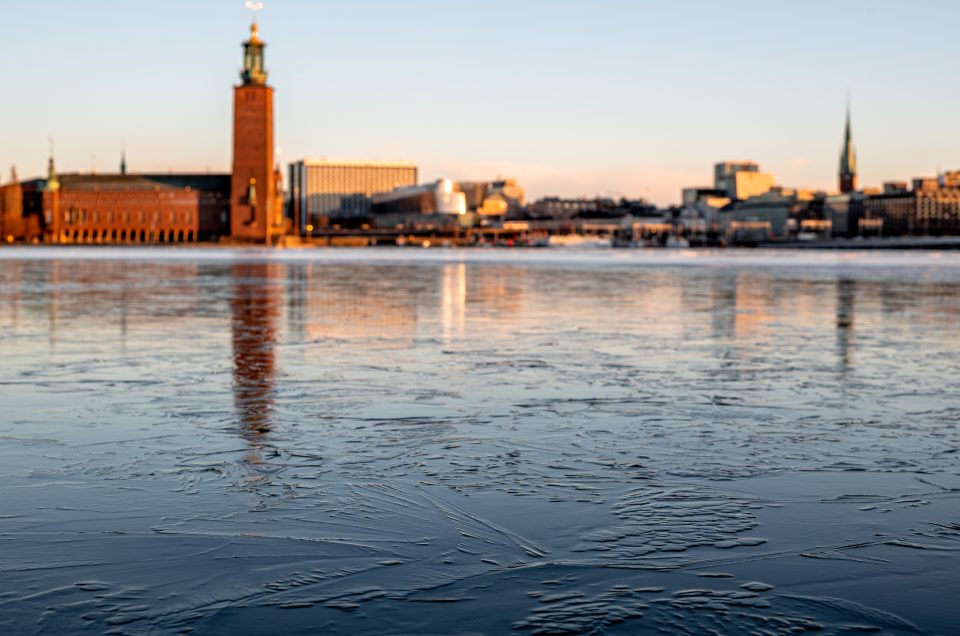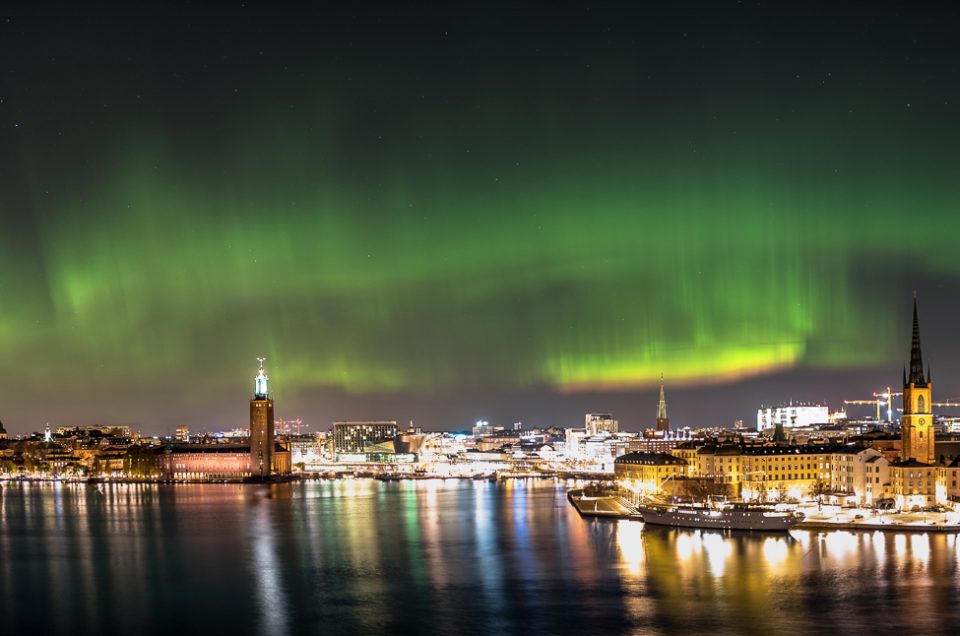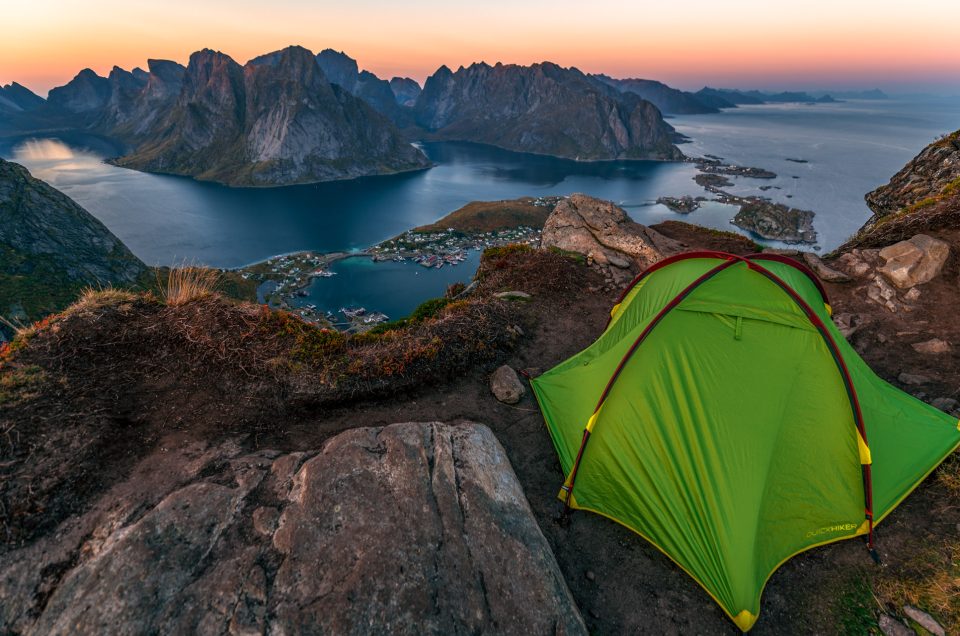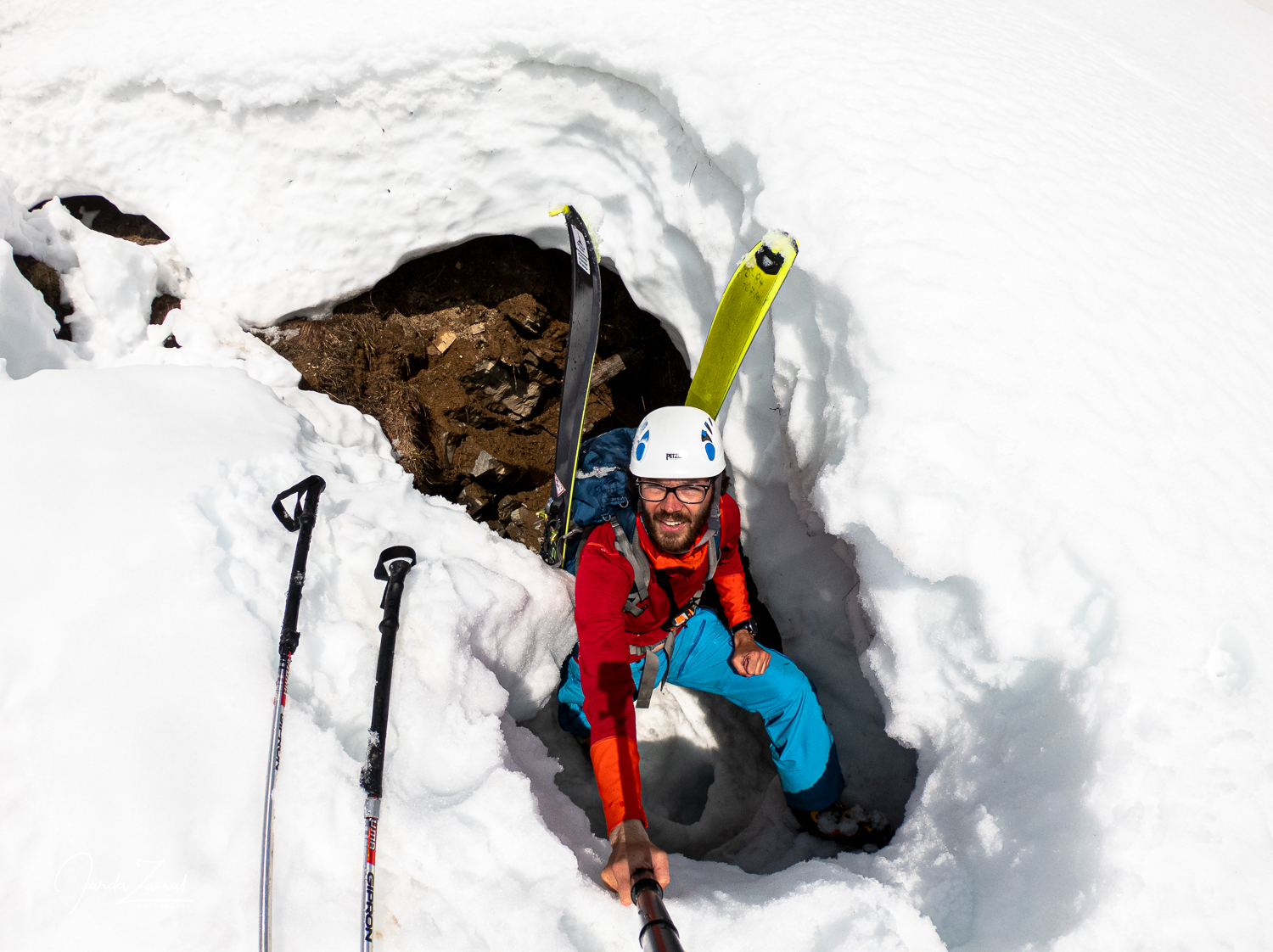Last Updated on April 15, 2025
Ice is fascinating. If it’s thick enough it allows people to make wonderful trips on lakes or seas. But ice skating is an adventurous sport and safety should never be underestimated. Do you know how to evaluate ice? You can’t just simply check the thickness and say that if it is 5cm thick, then it’s safe. In fact, it’s such a tricky question that I devote this whole article to it. I have been guiding on ice for three years and I took a thorough ice knowledge course in Sweden. Here are my most important learnings.
There are different kinds of ice and the quality matters
First, we have to go through the different types of ice as their quality differs. Since ice skating is so popular in Sweden, there is a extended vocubalury regarding ice terms. In my course we took a look at 117 of them. It isn’t important to know all of them but I will present to you the 5 most important ones.

Which ice has the highest quality?
- Black ice (in Swedish kärnis) – this ice is created on open water during cold and clear nights. It is the best ice to skate on. It’s so clear that you can see through the ice and 4 cm is usually enough to skate on. This applies though only if you are experienced and have full ice safety equipment with you. Check out the recommended ice thickness by authorities below. The only disadvantage of black ice is that it melts faster during spring time when sun shines strongly due to its colour. This ice makes wonderful sounds so you can also evaluate the thickness by listening to it.
- Snow ice (in Swedish stöpis) – this ice is created when there is snow on top of an ice layer which turns into ice during stöpning (Swedish word for the process of snow slowly melting and turning to slush which subsequently freezes). This ice is white in colour due to many small bubbles in the structure. The advantage of this ice is that it melts slower in heat due to its white colour. The disadvantage is that it quickly becomes soft on top in warm weather. This ice also cracks easier than black ice. I fell through once when the snow ice was 8 cm thick because it cracked after many other skaters who passed and there was no stable black ice underneath.
- Salt ice (in Swedish saltis) – salt ice has similar characteristics as snow ice. You hardly ever get black ice on the sea due to salt crystals. The water freezes during colder temperatures (-0,5C at Baltic sea and -1,8C at North Sea) and it also melts faster. This ice doesn’t make much sound compared to black ice so it is more difficult to evaluate the thickness.
- Double ice (in Swedish överis) – this ice occurs when there is water on top of the ice, for example because of rain, which subsequently freezes. The water slowly freezing on top creates a double ice layer with some water in between. This isn’t dangerous when it comes to falling through. However, you can get serious injuries if you come quickly from classic ice to double ice: your skates will suddenly stop and you will fall forward, often leading to knee and head injuries. Sometimes noses are even cut off… If there is a danger of double ice, it’s important to be extra careful and go slowly.
- Spring ice (in Swedish våris) – this is the most tricky ice. Spring ice is usually beautiful to skate on during early mornings if temperatures were below zero over night, but the quality of the ice can change dramatically under the hot sun. The structure of the ice can break into small pillars and you can suddenly fall through. So even if the ice is 20 cm thick, it can still fall apart under strong sun and your weight.
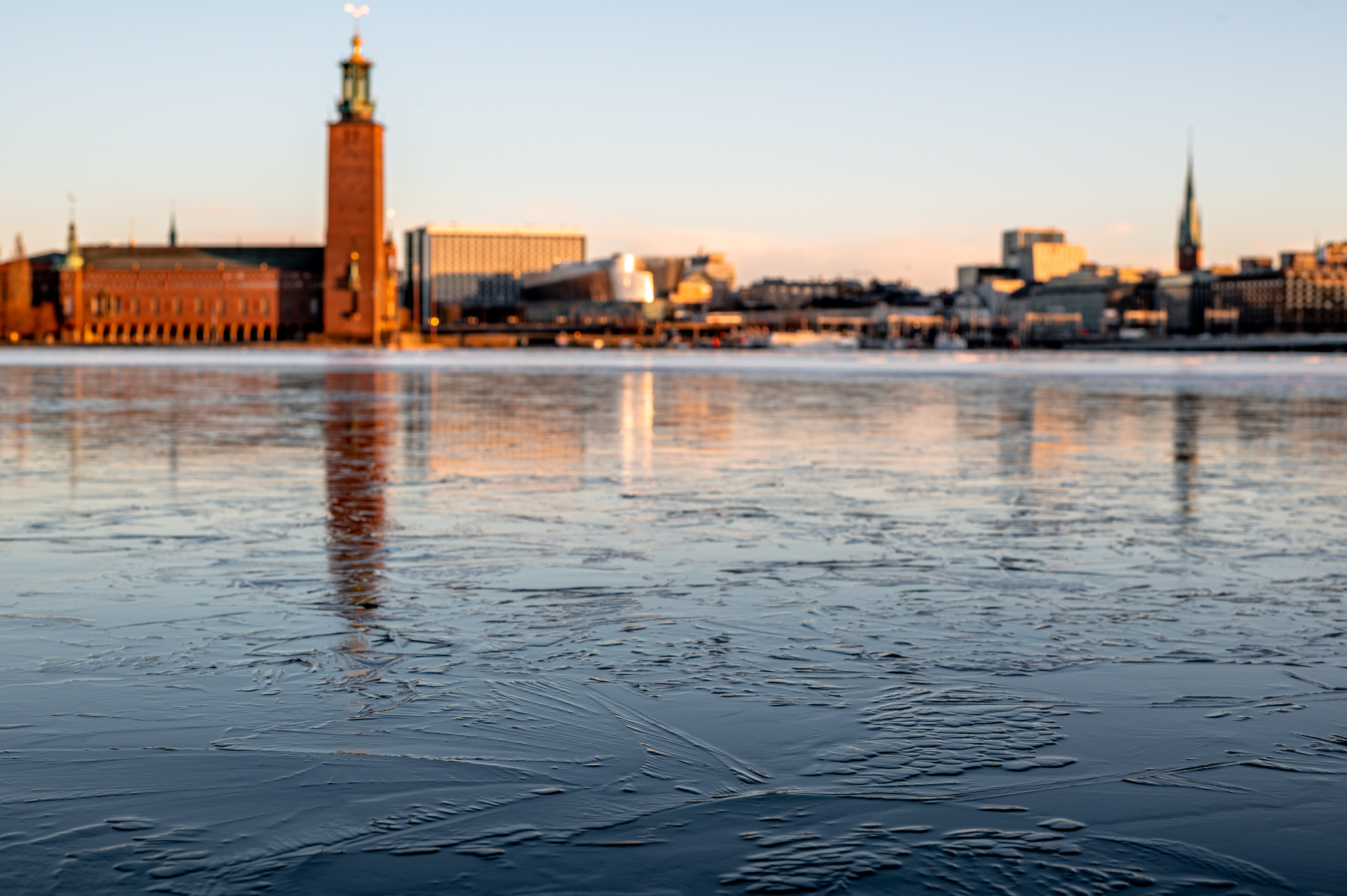
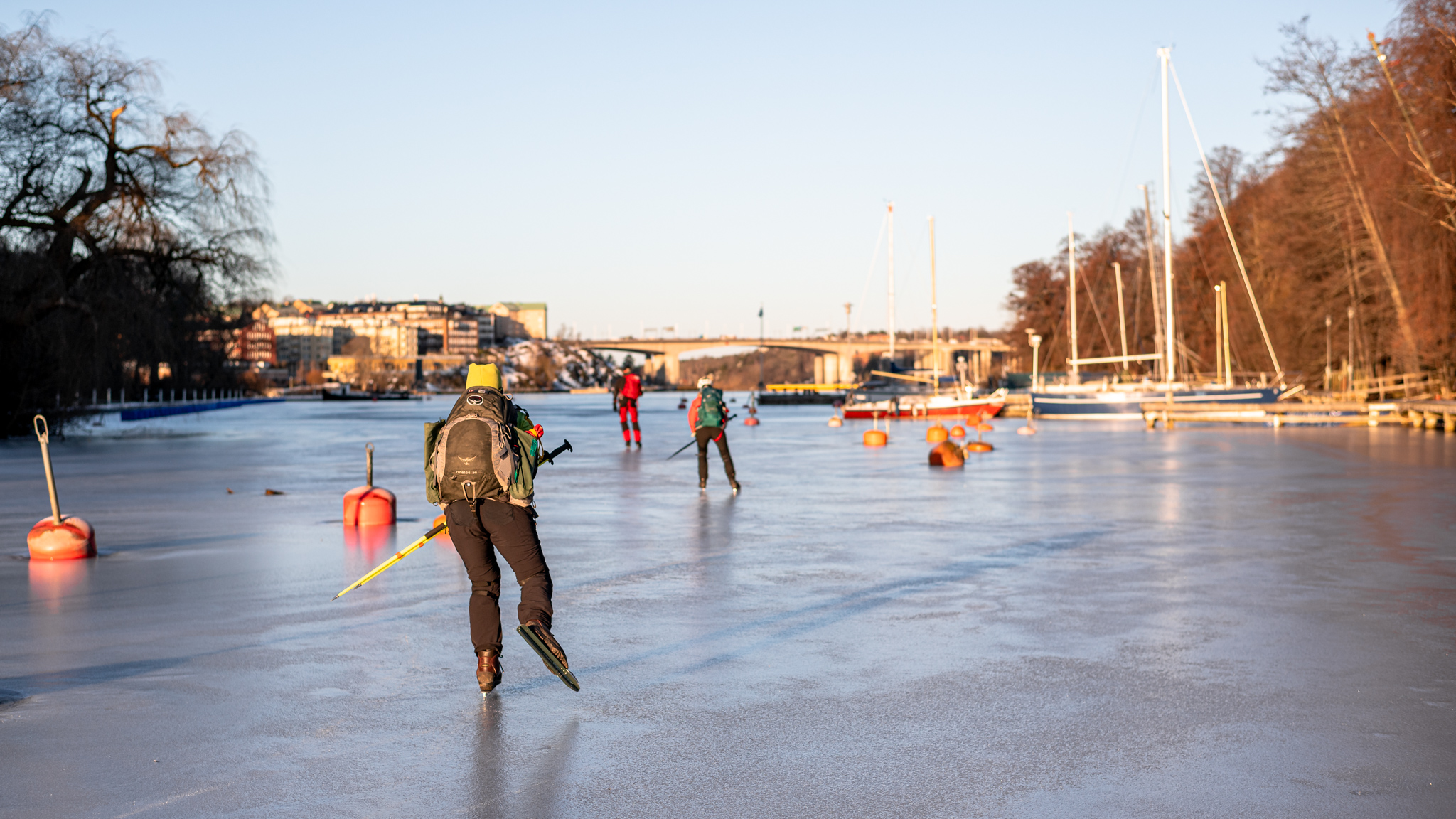
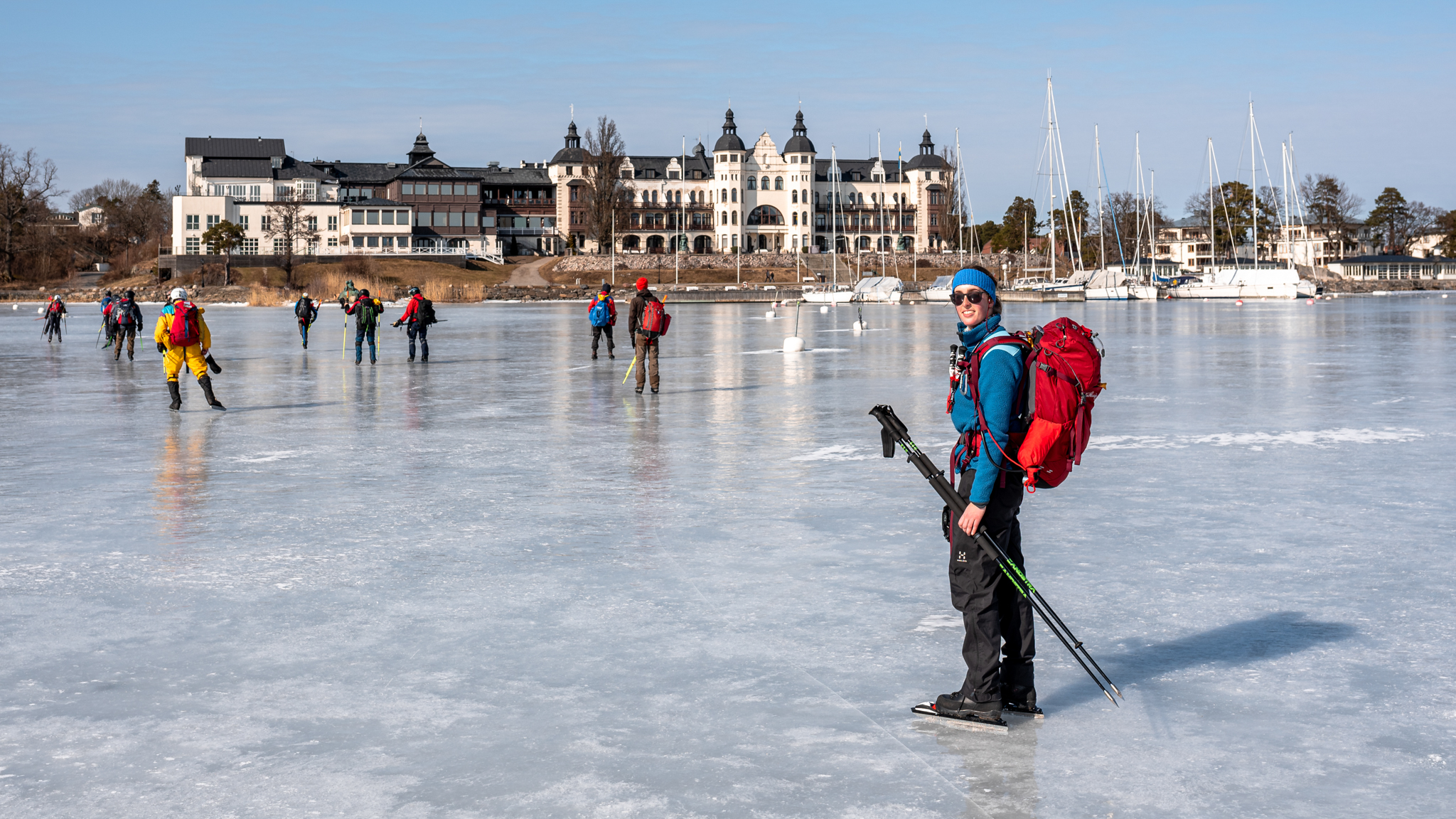
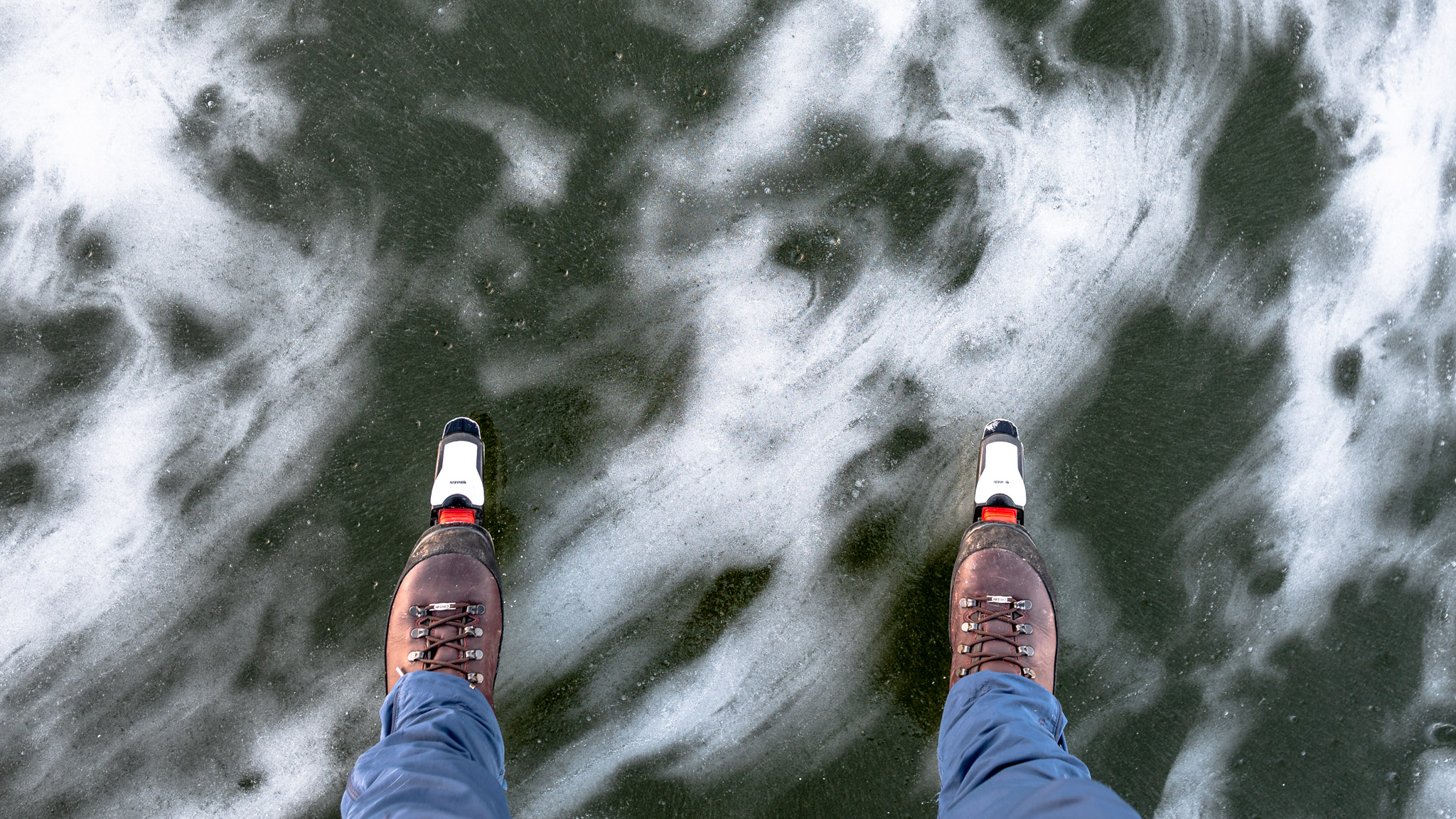
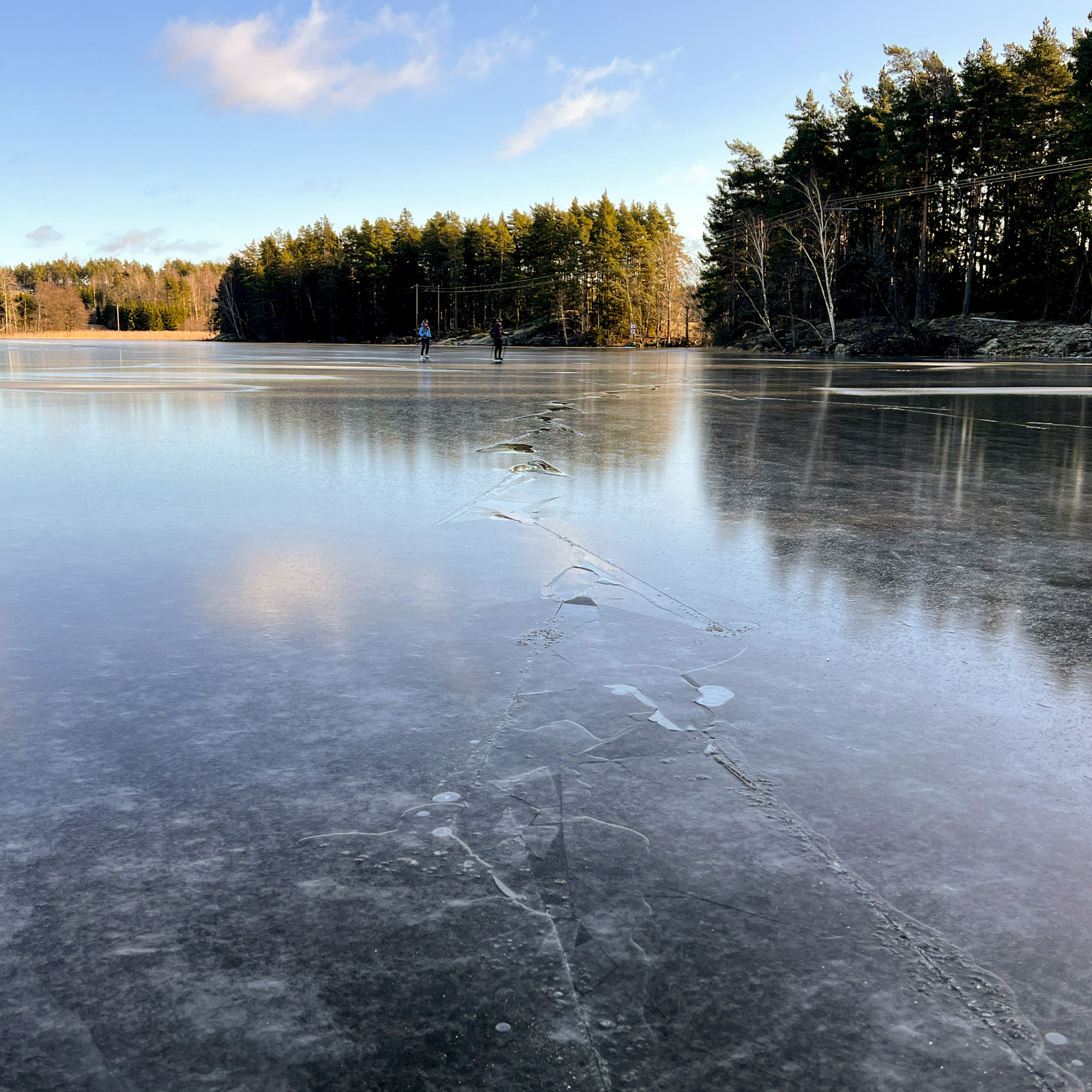
These are the most important ice structures you should know before coming to the ice but there are many more. Take a look at summary of Swedish Meteorological and Hydrological Institute.
Ice safety according to authorities
Now that you know the differences of ice quality we can finally take a look at how thick the ice should be to be safe. According to both Issäkerhetrrådet (Swedish Ice Safety Advisory) and Snowfed (Swedish Snowmobile association), the ice should be 10 cm thick to safely walk on, icefish or to ice skate. If you would like to take a snowmobile, car or a small truck the ice should be even thicker (see below). These numbers refers to the highest quality of black ice. If the ice is of lower quality, it must be even thicker.
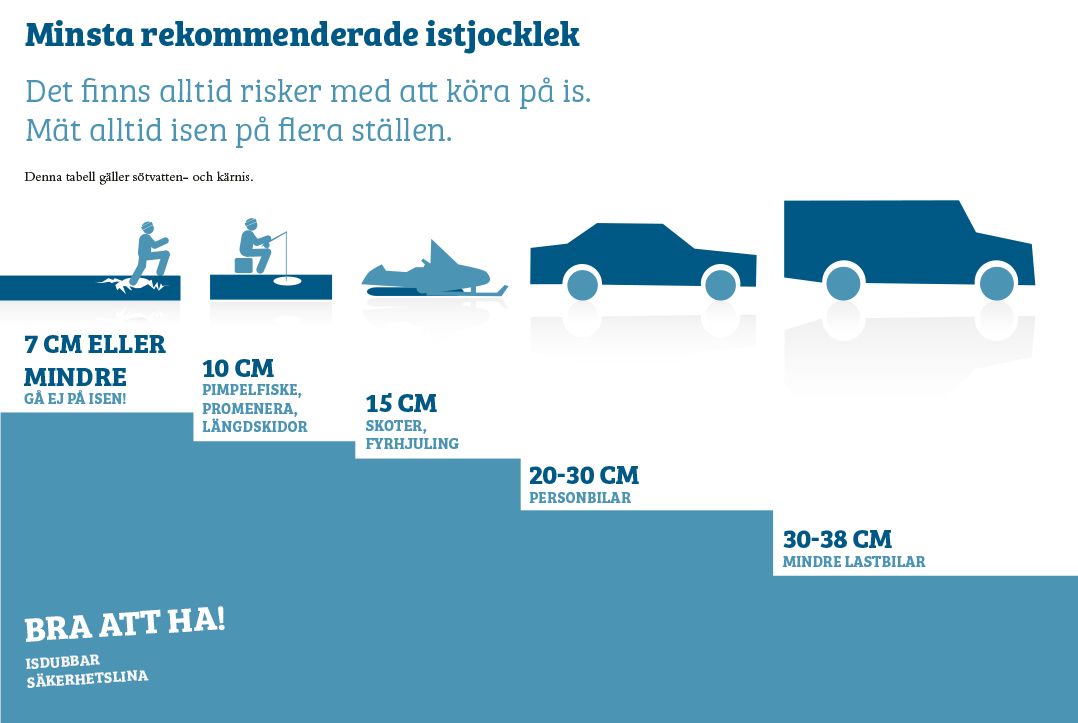
The strength of the ice varies both in time and space
Has ice safety become more clear already? Let’s make it more complicated again because the ice does not have the same thickness everywhere. As we were told during our ice knowledge course: “The ice can hold here, but not there. It can hold here now, but not later.” Why? The reasons are explained on the pictures below. If you want to go ice skating, it’s always important to take a look at a map beforehand to investigate potential dangerous areas. The Swedish terms are explained under the picture.
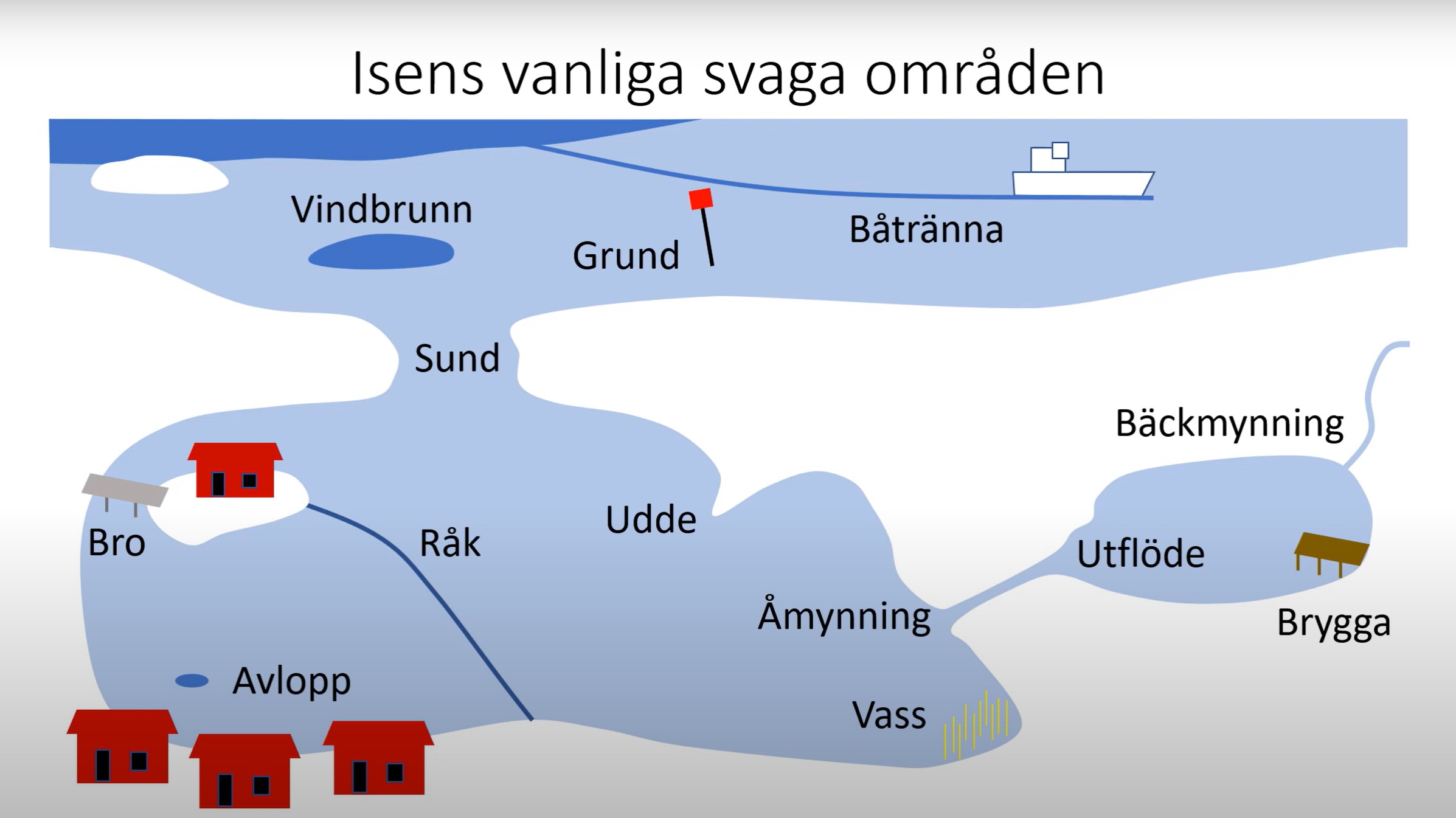
Areas with possibly weak ice
Even though it’s very cold, it doesn’t mean that the ice is safe everywhere. At some places the water flows more, so skaters must be extra careful. Below you can see a list of places where it’s worth being extra careful:
- Grund – Shallow water – when there is suddenly shallow water, the water flows faster there, which often causes weaker ice or even holes.
- Vindbrunn – Wind hole – is created when there is a new layer of ice after the first cold night but winds destroy a part of it.
- Inlopp – Water inlet – when water enters into a lake/sea, it causes weaker ice due to the flow.
- Utlopp – Water outlet – the same happens when water leaves a lake – the area nearby can have weaker ice.
- Avlopp – Drain – Areas where pipes drain water cause weaker ice too, again because there is a stream of (sometimes even warm) water.
- Udde – Headland – There is also usually some stream around headlands (edges of peninsulas). Be aware of these places.
- Råk – Crack – Cracks occur when the ice is shrinking and expanding in changing temperatures. There is no surprise that ice can be weaker around cracks. Skate a bit along the crack to find the best place to pass it.
- Ränna – Large crack caused by boats – These cracks are impossible to pass and there is also often a weaker ice around. Be careful around them especially when a new boat passes. Waves caused by the boats can cause new ice cracks.
- Vass – Reed – Water around reed often doesn’t manage to freeze as effectively as on open water. Before I learnt this I fell through once in such area. Be careful.
- Bro – Bridge – Ice under bridges is often weaker than elsewhere.
- Brygga – Jetty – they usually absorb more heat from sun and the ice around them gets weaker.
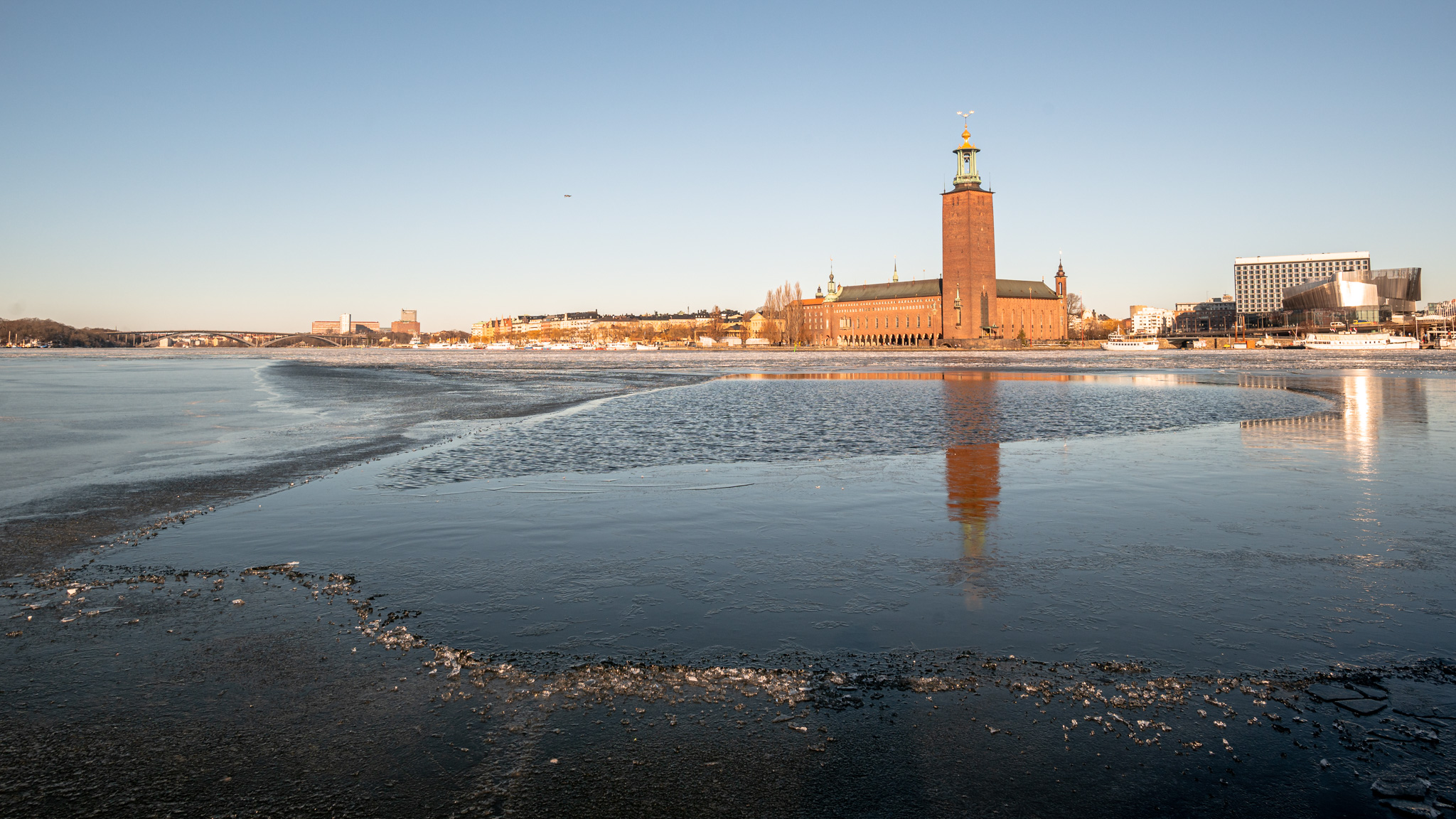
There are two more interesting terms that aren’t included on the map but they are good to know about. They aren’t usually dangerous because they are usually very small but sometimes they can grow into significant sizes:
- Slukhål – Suckhole – After rain, there will be some water on the ice which usually disappears slowly under the ice via small holes or cracks. The flowing water can create so called suckholes which can become pretty large if there is a lot of rain.
- Stöpvattenhåll – Snow ice hole – we talked about the stöpning process when snow slowly turns into ice. What we haven’t mentioned is that wet snow becomes very heavy and that causes water coming from below through small holes or cracks to the top of the ice. If these holes become larger they create snow ice holes which look like neurons, aren’t they beautiful?
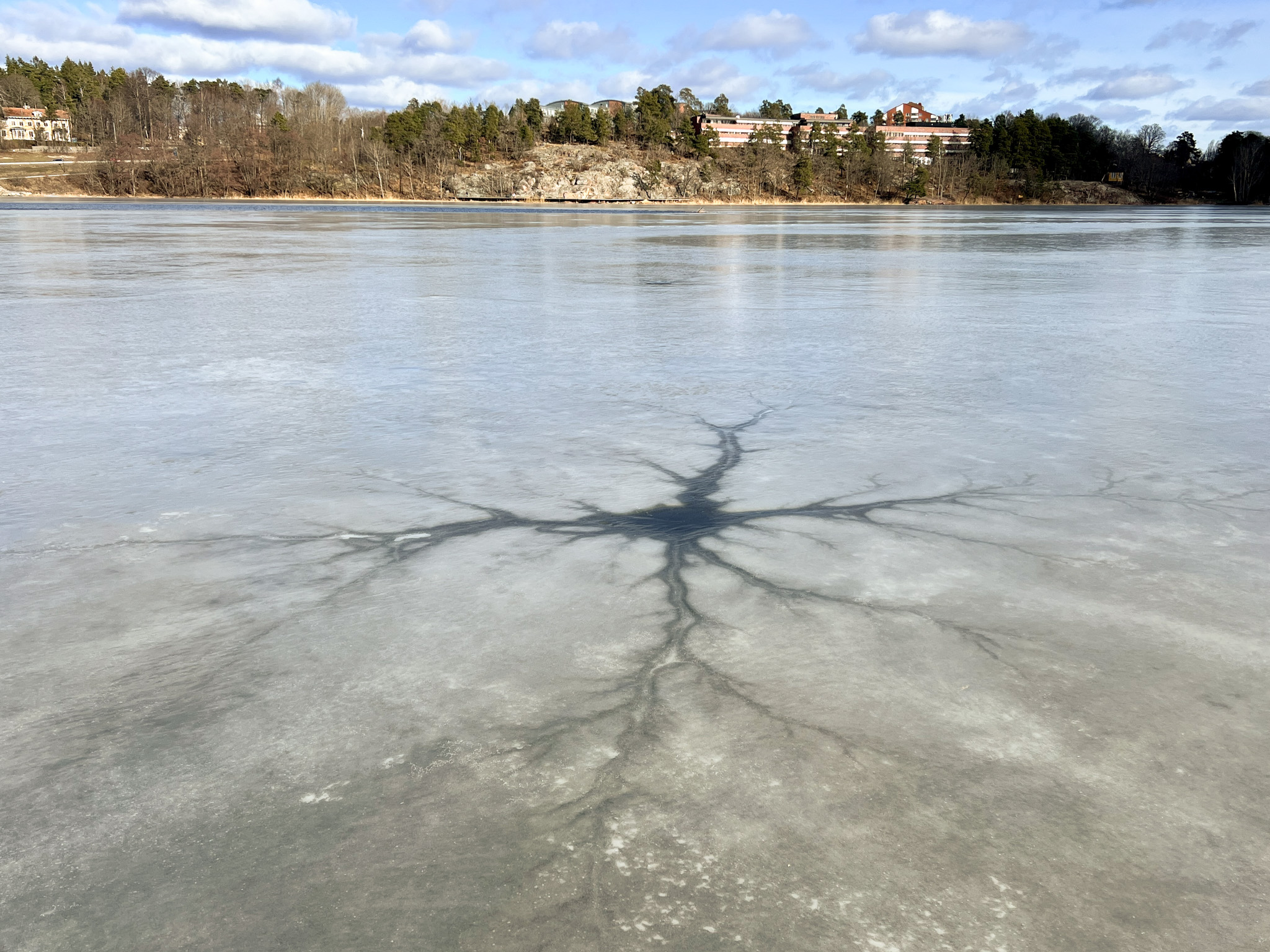
The danger of spring Ice
Let’s get once more back to the spring ice (våris) because it can be very dangerous. When the sun is very strong (in Sweden, it starts to impact ice significantly from beginning of March), it can change thick ice into dangerous area because the ice loses its structure from below and it’s hard to see it. Take a look what happened to an ice fisherman in 2023 in Sweden.
Ice Knowledge Summary
We have gone through all the important terms. We learnt about the different types of ice and we also checked all the potentially dangerous areas with weak ice. What I haven’t mentioned in this article is the safety equipment and the importance of experience and being in a group. I wrote a whole article about that before and you should definitely study it too before coming to the ice. You can also check out how it is to fall through ice and how you save yourself. I tried it in a course and it was actually a lot of fun 🙂 If you would like to try skating on natural ice under safe conditions, I am also working as an ice skating guide in Stockholm. Let me know if you are interested. I hope to see you on the ice some day!
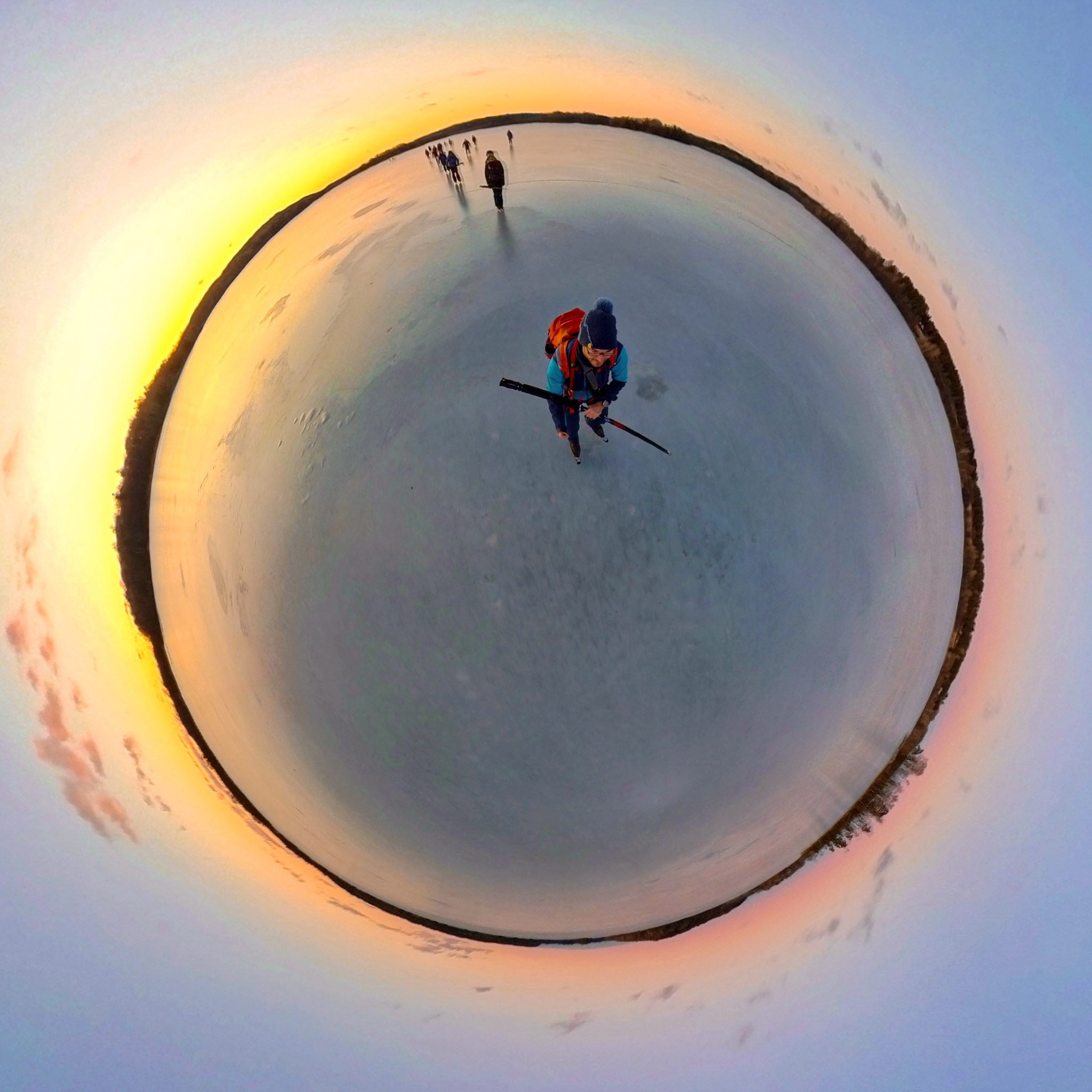
Disclosure: Please note that some of the links above may be affiliate links, and I earn a small commission at no additional cost to you, if you make a purchase. I recommend only products and services of companies I use and the income goes to keeping the website running.
